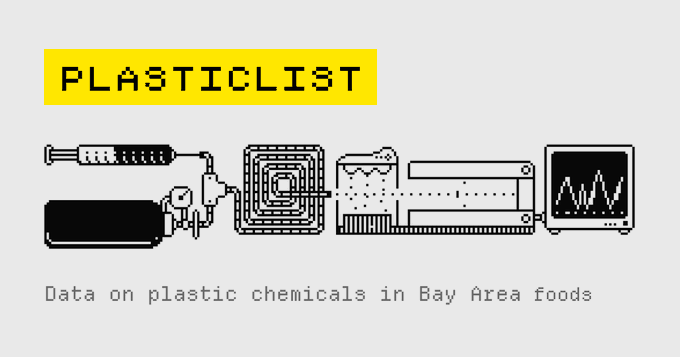from ZeroHedge:

Robert F. Kennedy Jr. has set his sights on the processed foods industrial complex. Nominated by President-elect Donald Trump to lead the Department of Health and Human Services, Kennedy has long been an outspoken critic of toxic ingredients in food, including dyes and seed oils.
Trump’s second term has yet to begin, but the merging of the ‘Make America Healthy Again‘ and ‘Make America Great Again’ movements has sparked a dietary awakening among millions of consumers.
It’s not just dyes and seed oils poisoning Americans and ending their lives short; plastic chemicals are increasingly being found in popular fast foods and supermarket staples.
TRUTH LIVES on at https://sgtreport.tv/
The former CEO of GitHub, Nat Friedman, who is also an investor seeding AI, infrastructure, open source, and frontier tech companies and is focused on health, published data on X about plastic chemicals found in a majority of foods across the San Francisco Bay Area.
“We did it! We tested 300 Bay Area foods for plastic chemicals. We found some interesting surprises,” Friedman wrote on X.
Here are the top five findings from the test, most of which are shocking (full results published here):
- Our tests found plastic chemicals in 86% of all foods, with phthalates in 73% of the tested products and bisphenols in 22%. It’s everywhere.
- We detected phthalates in most baby foods and prenatal vitamins.
- Hot foods which spend 45 minutes in takeout containers have 34% higher levels of plastic chemicals than the same dishes tested directly from the restaurant.
- The 1950s Army rations we tested contained surprisingly high levels of plastic chemicals.
- Almost every single one of the foods we tested are within both US FDA and EU EFSA regulations.
Friedman noted:
“An important disclaimer: we have refrained from drawing high-confidence conclusions from these results, and we think that you should, too. Consider this a snapshot of our raw test results, suitable as a starting point and inspiration for further work, but not solid enough on its own to draw conclusions or make policy recommendations or even necessarily to alter your personal purchasing decisions. These results represent point-in-time results of a small number of product samples and may not be representative of actual product contents. These tests, like all tests, have inherent uncertainties, and different testing methodologies are likely to yield different results. And the existence of a chemical in a food doesn’t necessarily imply a safety issue. We’d be thrilled to see serious efforts to replicate our results and we are open to any corrections you may have.”
“Was the Whole Foods meat from the counter or the packages on the shelves? I get this brand there,” one X user asked Friedman.
He responded…



